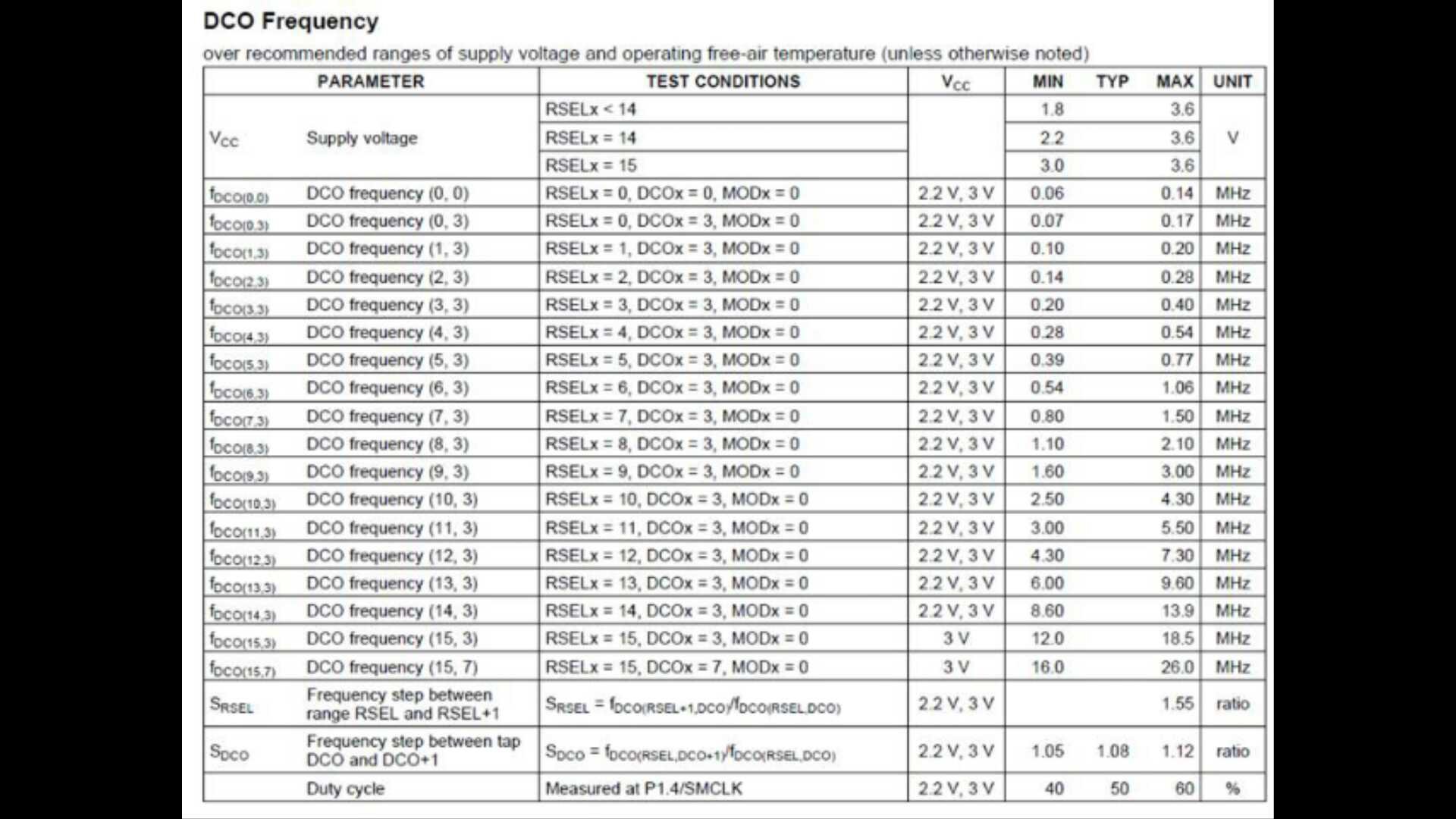E2E Team,
I’m looking for a spec on the min voltage for the MSP430 that can support DCO of 16MHz.
There is something in the datasheet about 3V, but it doesn’t seem to have a min level.
Do they have a recommended or required way to safely switch to 16MHz on start up from 0V to 3.3V
My understanding is after a PUC it defaults to 1MHz and that is stable within 2uS.
Thanks.


